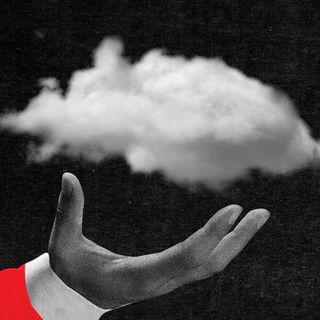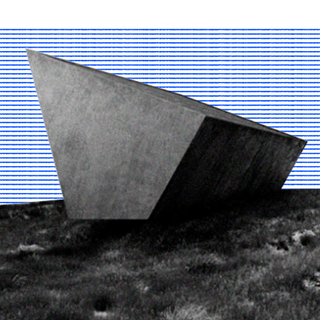
Pluto Lost Planetary Status Due to Influence of Astrology in Science, Say Scientists
“…around the early 1900s, we put him [Galileo] back in jail again when we went with this folk concept of an orderly number of planets.”

What constitutes a planet, and why is Pluto not one? These questions arose in the mainstream when the beloved little underdog was kicked off the planetary list in our solar system. But scientists have grappled with these questions for centuries now.
A new paper, published in Icarus, argues that how we define planets may need an overhaul — and their new criteria would not only include Pluto, but also several moons and asteroids. The study was led by Phillip Metzger from the University of Central Florida, and went through 400 years of scientific literature.
The scientists analyzed how the International Astronomical Union (IAU) came to define a planet, all of which led up to Pluto being kicked out. There are three requirements, as per the IAU’s definition: it orbits the Sun, it has sufficient mass as to be spherical, and has cleared the neighborhood around its orbit.
Instead, the authors of the paper argue that shared geological characteristics should inform what constitutes a planet. The current definition, they argue, was rooted not in scientific developments, but by folk astrology.
“We report the results of a 5-year study of the astronomical and planetary science literature to understand how the concept of a planet has evolved in relationship to scientific theory and to culture,” the researchers noted.
The story goes all the way back to the Copernican Revolution in the 16th century, when there was a paradigm shift in how we understood the heavens and our place in it. Science moved from a geocentric to a heliocentric model — meaning that we no longer believed that Earth was stationary and at the center of the universe, but understood that it was one of many planets that revolved around the sun. “What we discovered is surprising: the story that is commonly told about the Copernican Revolution and how it changed the concept of planets is not correct,” the paper states.
While astronomers held on to the view that satellites and moons were planets and taught the same until the 1920s, this conception faded away over the next few decades.
Essentially, even when the Sun was discovered to be the center of the solar system, the belief that only objects that revolved around it could constitute planets persisted. This excluded satellites and ignored asteroids; eventually, it also led to Pluto’s disqualification since it did not yet complete one revolution since its discovery.
This had implications for what was considered a planet — while science held that “geologically active” bodies including moons and asteroids were planets, the influence of astrology and teleology meant that what an object orbits mattered. So, satellites and asteroids were ruled out because they were disobedient, and did not fit into neat conceptions of an orderly universe.
In arguing for a revival of the Copernican concept of “planets”, scientists say that geological complexity is the most useful taxonomy to consider when it comes to defining planets. “It is this complexity of both primary and secondary planets that is a key part of the chain of origins for life in the cosmos,” they write.
Related on The Swaddle:
Pluto Stopped Being a Planet. Now Its Atmosphere Is Disappearing
How the taxonomy is defined and what is included in it, has a bearing on the theories and hypotheses that scientists make about the cosmos, the paper explains. It’s a bit like how mammals are classified — not according to their location, but about their shared characteristics.
With planets, similarly, arbitrary notions cannot define what is and isn’t one. But simplified taxonomies can affect how theories are formulated and built upon, and can ultimately affect science negatively, the authors explain.
The scientists debunk the IAU’s three tenets, and analyze historical records to show that orbiting the Sun was never part of explanatory science. Latin, English, French, German, and Spanish-language publications all showed that the Moon, nor other moons, were never discarded as planets by the Copernican scientists. Galileo observed that the Moon was a geological and changing body much like the Earth; further, he argued that the Moon was opaque and reflective much like the planet Venus. He used these shared properties to conclude that all planets are those that are opaque and reflect light, and stars are fixed in space and emit their own light.
“I have most conclusive arguments ready, showing clearly that… all the planets receive their light from the sun, being by constitution bodies dark and devoid of light; but that the fixed stars shine by their own proper light…” he wrote, in 1611.
His theories were “theory-laden” and not “arbitrary,” argue scientists. In the 18th century, however, astrology began to gain massive popularity among the public, even if it was not scientifically accepted. This led to an oversimplification of planetary models: the idea was that they must be simple, and easy to comprehend. “The public’s old geocentric and emerging heliocentric planet concepts rode along in the folklorization of astrology. Astrology depends on a crucial assumption about the planets: they must be few enough and orderly enough that their influences can be sorted out and turned into predictions,” the authors write.
Related on The Swaddle:
You Think You Know Your Correct Star Sign, But You Probably Don’t
“Since people in the 18th and 19th centuries still wanted to believe astrology after switching to heliocentrism, the logic of astrology must have imposed a subconscious bias toward continuing to see planets in the way that is necessary for astrology to make sense. That is, it must have imposed a bias toward seeing planets as a small and orderly set of objects.”
Moreover, planets had to be sufficiently close to the Earth to be invested with astrological meaning. Eight bodies, including Uranus, made the cut; the inclusion of asteroids and less orderly bodies undermined the assumptions of astrology and made the universe out to be more chaotic and less decipherable than the occult practice claimed.
“In summary, astronomy was proving astrology to be increasingly disconnected from reality, but the almanacs could maintain the fiction of astrological relevance and maintain their sales by selectively manipulating the list of planets they presented to the public.”
With a lack of formal public education, moreover, people were not aware of what planets entailed and derived much of their information from astrologers.
As a result, planetary science was changed forever. When Pluto was discovered, it was officially designated a planet — but declining interest in planetary taxonomy ensured that the vacuum was once again filled by folklore. “This might seem like a small change, but it undermined the central idea about planets that had been passed down from Galileo,” Metzger said.
“Planets were no longer defined by virtue of being complex, with active geology and the potential for life and civilization. Instead, they were defined by virtue of being simple, following certain idealized paths around the Sun.”
The IAU sought to end fierce debate on the subject with its controversial decision in 2006. But this showed a regression into the belief system that Galileo into jail, Metzger says.
“When scientists adopted his [Galileo’s] position, he was vindicated, in a sense, let out of jail. But then around the early 1900s, we put him back in jail again when we went with this folk concept of an orderly number of planets. So, in a sense, we rejailed Galileo… what we’re trying to do, in a sense, is get Galileo out of jail again, so that his deep insight will be crystal clear.”
Rohitha Naraharisetty is a Senior Associate Editor at The Swaddle. She writes about the intersection of gender, caste, social movements, and pop culture. She can be found on Instagram at @rohitha_97 or on Twitter at @romimacaronii.
Related


How One Country ‘Modified’ Its Weather to Create Artificial Rain and Lower Pollution
